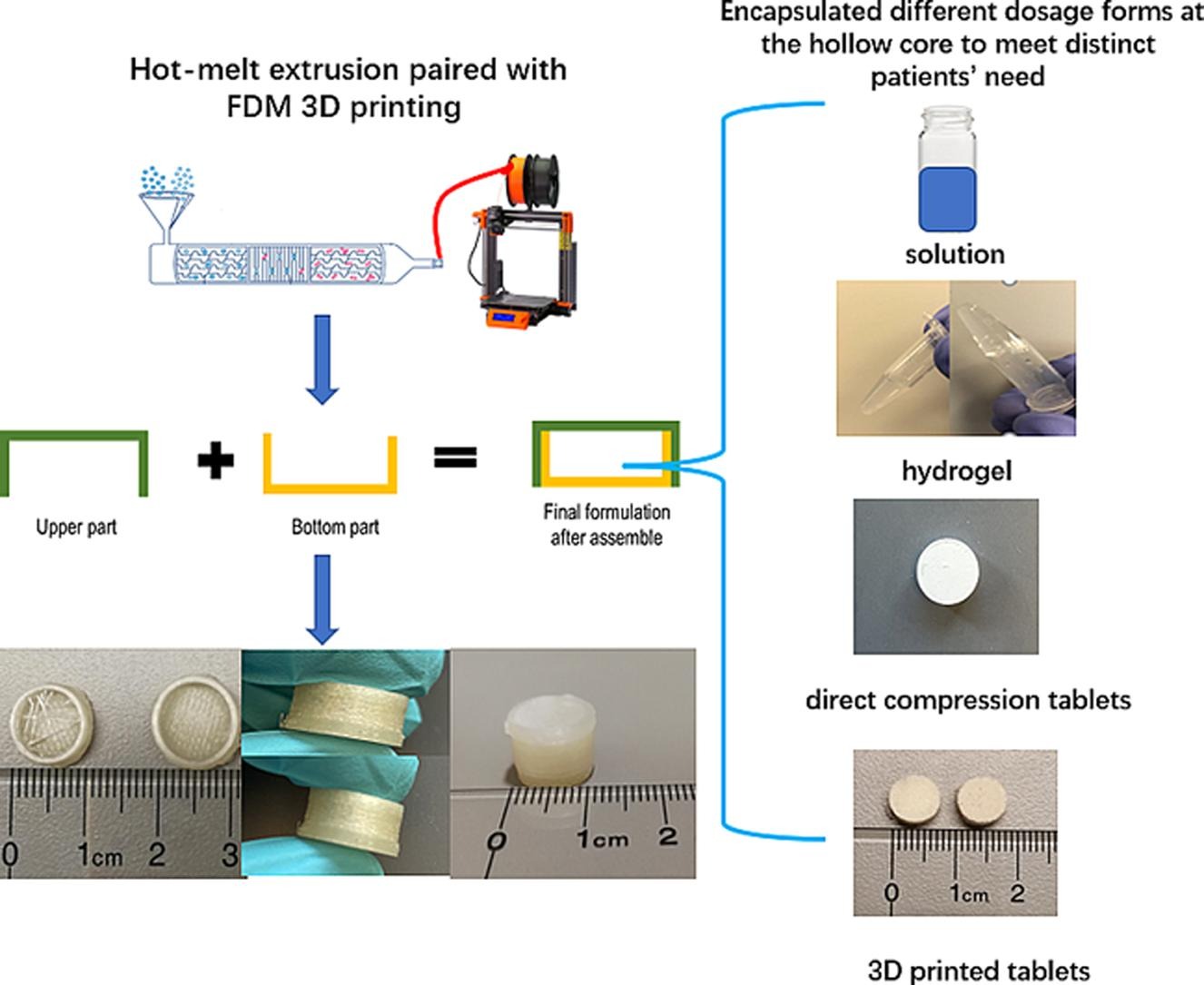Development of multifunctional drug delivery system via hot-melt extrusion paired with fused deposition modeling 3D printing techniques

The model of core–shell structured tablets is gaining increased interest due to its advantages in controlled-release and combinational drug delivery. Through the encapsulation of the drug by the outer shell, this model exhibits huge potential for reduced administration frequency, improved taste-masking, and personalized medication strategy. Although different types of core–shell tablets have been recently developed, most of them focused on the embedding of the solid tablets. Therefore there is still a need to investigate an optimized model in which multiple dosage forms can be loaded.
This work uses hot-melt extrusion and fused deposition modeling 3D printing (FDM 3DP) techniques to develop a multifunctional core–shell model for controlled drug delivery. Acetaminophen (APAP) was used as the model drug. Hydroxypropyl cellulose (HPC) and hydroxypropyl methylcellulose (HPMC) was used as the matrix materials. Polyethylene oxide (PEO) and Eudragit RS PO (E RSPO) were used to adjust the printability while the E RSPO was expected to act as an extended-release agent due to its hydrophobicity. Liquid, semi-solid and solid dosage forms could be successfully loaded into the produced shells. The formulations were characterized by scanning electron microscopy, three point-bend tests, differential scanning calorimetry, and dissolution studies.
The dissolution results suggested the modified-release character of the designed model. Overall, the designed core–shell model could be successfully produced via hot-melt extrusion paired with FDM 3DP techniques and could be utilized for the delivery of distinct dosage forms which improve the on-demand formulation development for patient-centered medication.
Read more
Materials
APAP was used as the model drug. PEO (Polyox™ WSR N-80 NF, Colorcon. USA), HPC (Klucel™ HPC EF, Ashland Inc. USA), and E RSPO (Evonik Industries, Essen, Germany) were used as the matrix materials of the shell models. PEO and E RSPO were used to adjust the printability, meanwhile the E RSPO was expected to act as an extended-release agent due to its hydrophobicity and low permeability [2]. Polyethylene glycol 4000 (PEG, Fisher Scientific. USA) was used as the plasticizer. HPMC, (Methocel™ K4M, Colorcon Inc. USA), HPC, and E RSPO were used for the fabrication of the core 3D printed tablets.
Ziru Zhang, Sheng Feng, Ahmed Almotairy, Suresh Bandari, Michael A. Repka, Development of multifunctional drug delivery system via hot-melt extrusion paired with fused deposition modeling 3D printing techniques, European Journal of Pharmaceutics and Biopharmaceutics, Volume 183, 2023, Pages 102-111, ISSN 0939-6411, https://doi.org/10.1016/j.ejpb.2023.01.004.

